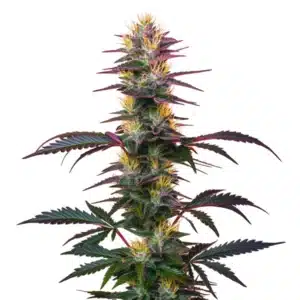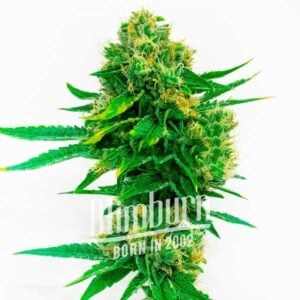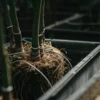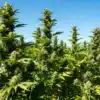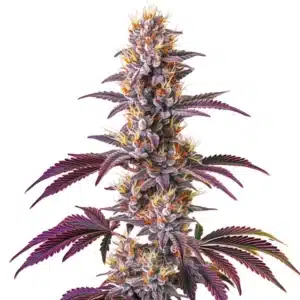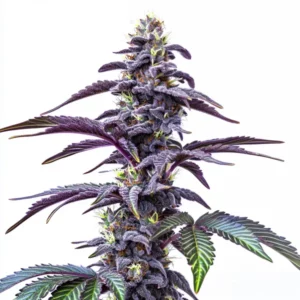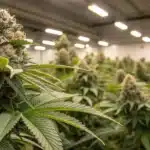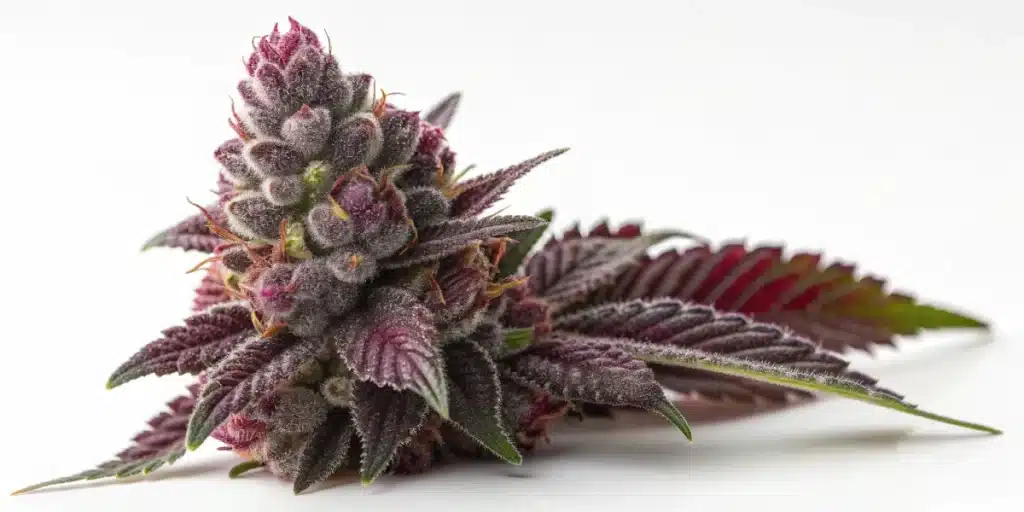
How to Grow Blackberry Autoflower
Blackberry Autoflower Description
Blackberry Auto is a 70% Indica / 30% Sativa hybrid created by crossing Cream Caramel Auto with Purple Kush. With THC levels of 17%–19% and very low CBD (0.02%), it produces a strong, relaxing body high complemented by a happy, talkative cerebral lift. Compact at around 3.28 ft (1 m) tall, it finishes in just 8–10 weeks from seed, making it perfect for small spaces and beginner growers.
This autoflower’s dense buds exude sweet berry and kush aromas, driven by terpenes such as Myrcene, Beta-Caryophyllene, and Linalool. Users report relief from arthritis, insomnia, and pain thanks to Delta-3-Carene and Linalool, while enjoying a sociable, relaxed effect ideal for evening use.
Recommended Strains
BlackBerry Auto
|
|
THC | 17% - 19% (Medium) |
|
|
Type | Autoflowering |
|
|
Yield | Medium |
|
|
Phenotype | 70% Indica / 30% Sativa |
Blackberry Moonrocks
|
|
THC | 26% - 33% (High) |
|
|
Type | Feminized |
|
|
Yield | High |
|
|
Phenotype | 80% Indica / 20% Sativa |
Yields average 1.47 oz/ft² (450 g/m²) indoors or 2–4 oz/plant (80–120 g) outdoors under optimal conditions. Its fast-flowering genetics and forgiving nature make Blackberry Autoflower a go-to for a quick, fragrant harvest.
Promos & Deals
Growing Environment
Indoors: Keep daytime temperatures between 68–78 °F (20–26 °C), with nights slightly cooler. Maintain 55%–65% relative humidity (RH) during vegetative growth, lowering to 40%–50% in bloom to protect buds and boost resin.
Outdoors: Plant in full sun with well-draining soil amended with compost. Ensure at least six hours of direct light daily. In hot climates, provide afternoon shade; in cool regions, use a simple hoop house to extend warmth.
Good airflow is essential: use oscillating fans indoors and space outdoor plants 2–3 ft (0.6–0.9 m) apart to reduce humidity pockets and discourage pests.
Setting Up Your Grow Space
Blackberry Autoflower Indoor Cultivation
Use a 3×3 ft tent with reflective lining. Hang full-spectrum LEDs on an 18/6 light schedule throughout. Install a carbon-filtered exhaust and intake vent to manage odor and climate. Place a small fan at canopy level to strengthen stems and prevent hotspots.
Grow in 3–5 gal pots filled with an airy soil mix (pH 6.0–6.5) enriched with perlite. Starting in final containers avoids transplant shock. Automate your light and climate controls with digital timers and controllers for hands-off consistency.
Blackberry Autoflower Outdoor Cultivation
Plant in raised beds or fabric pots with a 2:1 mix of native soil and compost/perlite. Space plants 2–3 ft apart. Stake young plants to support top-heavy buds.
Water deeply when the top inch of soil dries, then allow slight drying to encourage root strength. Mulch to conserve moisture and suppress weeds. Protect buds from heavy rain with a simple tarp during early flowering.

Seed Propagation and Germination
Soak seeds in distilled water for 12 hrs, then place between damp paper towels at 75–80 °F (24–27 °C). After 24–48 hrs, when taproots appear, plant them taproot-down ½ in into moist starter mix under a humidity dome.
Provide 18–20 hrs of gentle light until true leaves form. Remove the dome gradually over 3–4 days to acclimate seedlings to ambient humidity. Label each pot to track progress.
Blackberry Autoflower Vegetative Phase
Maintain 18/6 lighting. Feed a mild nitrogen-rich nutrient (N-P-K 3-1-2) at half strength weekly. Apply low-stress training (LST) in weeks 2–3 to develop an even canopy and expose bud sites to light.
Keep temperatures at 68–78 °F and RH at 55%–65%. Introduce beneficial microbes or a kelp foliar spray early to strengthen roots. Prune lower foliage to improve airflow and direct energy upward.
Blackberry Autoflower Flowering Phase
Auto-flowering begins around week 4. Continue 18/6 lighting or switch to 12/12 if preferred. Transition to a bloom formula (N-P-K 1-3-2) to support bud development. Lower RH to 40%–50% and maintain 65–75 °F to enhance resin and terpene production.
Remove large fan leaves around week 6 to expose flowers. Support heavy colas with soft ties or netting. Begin a gentle flush with plain water in the final week to improve taste and smoothness.
Fertilization and Nutrition
Use N-P-K 3-1-2 in veg, switch to 1-3-2 in early bloom, and finish with 0-3-3 in late bloom. Include calcium, magnesium, and trace elements if deficiencies appear. Flush in week 8–9 to remove excess salts.
Amend soil with worm castings and kelp meal to boost soil life and terpene expression. A foliar spray of seaweed extract in early bloom can improve bud set without altering root pH.
Pest and Disease Control
Inspect daily for spider mites, aphids, and thrips. Treat early with neem oil or insecticidal soap, focusing on leaf undersides. Use yellow sticky traps to monitor flying pests.
Ensure strong airflow and avoid overhead watering during bloom to prevent powdery mildew and bud rot. Quarantine new plants for 7 days before mixing with your main crop.
Blackberry Autoflower Harvesting and Curing
Harvest when 70%–80% of trichomes are cloudy with a few amber. Cut branches, trim fan leaves, and hang upside-down in a dark, ventilated space at 60–70 °F and 50% RH. Rotate for even drying over 7–10 days.
Once stems snap, manicure buds and jar them loosely in glass containers up to 75% full. “Burp” jars daily in week 1, then weekly for 2–4 weeks, using humidity packs to maintain 60%–62% RH.
Post-Harvest: Drying, Curing & Storage
After curing, store buds in airtight jars with Boveda packs at 60–65 °F in darkness. For long-term storage, vacuum-seal in Mylar with desiccants. Label jars with strain and date, and check monthly to rebalance humidity.
Troubleshooting Common Issues
Nutrient Issues: Yellow leaves signal nitrogen deficiency; burnt tips show nutrient burn. Adjust feed or flush with pH-balanced water, then resume at half strength.
Environmental Stress: Heat stress causes leaf curl; light burn bleaches leaf tips. Raise lights, improve ventilation, and keep temps below 80 °F. Use a humidifier if RH drops under 40%.
Watering & pH/EC: Overwatering droops plants; underwatering wilts them. Water only when top inch of soil is dry. Keep pH 6.0–6.5 and EC 1.2–1.8 mS/cm.
Is Blackberry Autoflower Indica or Sativa?
Blackberry Autoflower is predominantly Indica (70% Indica / 30% Sativa), offering a relaxing body high with a gentle cerebral uplift ideal for evening relaxation and pain relief.
Advantages & Disadvantages
Advantages: Fast 8–10 week cycle, compact size, resinous berry aroma, therapeutic relief for arthritis and insomnia, beginner-friendly autos.
Disadvantages: Moderate yields, requires humidity control to prevent mold, mild THC may not satisfy heavy users.
Why Buy Blackberry Autoflower Strain
Choose Blackberry Autoflower for its fast finish, fruity-kush aroma, and therapeutic relief from arthritis, insomnia, and pain. Autoflower genetics simplify cultivation no light-cycle changes needed.
Its compact stature, forgiving nature, and consistent performance make it an ideal pick for beginners and small-space gardens.
Blackberry Autoflower Similar Strains
Cream Caramel Auto
Cream Caramel Auto finishes in 8–9 weeks with sweet caramel aroma and relaxing effects. Its compact size and moderate yield mirror Blackberry Autoflower’s performance.
Purple Kush Auto
Purple Kush Auto is a 70% Indica autoflower with grape and kush notes. It flowers in 9–10 weeks and offers heavy resin production and a sedative body high.
Blueberry Auto
Blueberry Auto completes in 8–9 weeks, delivering sweet berry flavors and calm relaxation. Its beginner-friendly genetics and compact growth are comparable to Blackberry Autoflower.
Tips for Professionals
Automate climate with digital controllers for temperature, humidity, and CO₂ supplementation. Use SCROG nets to maximize canopy light exposure. Integrate mycorrhizae at transplant to boost root health and nutrient uptake.
Log environmental data light intensity, feeding schedule, humidity and refine protocols to amplify resin and terpene profiles in successive grows.
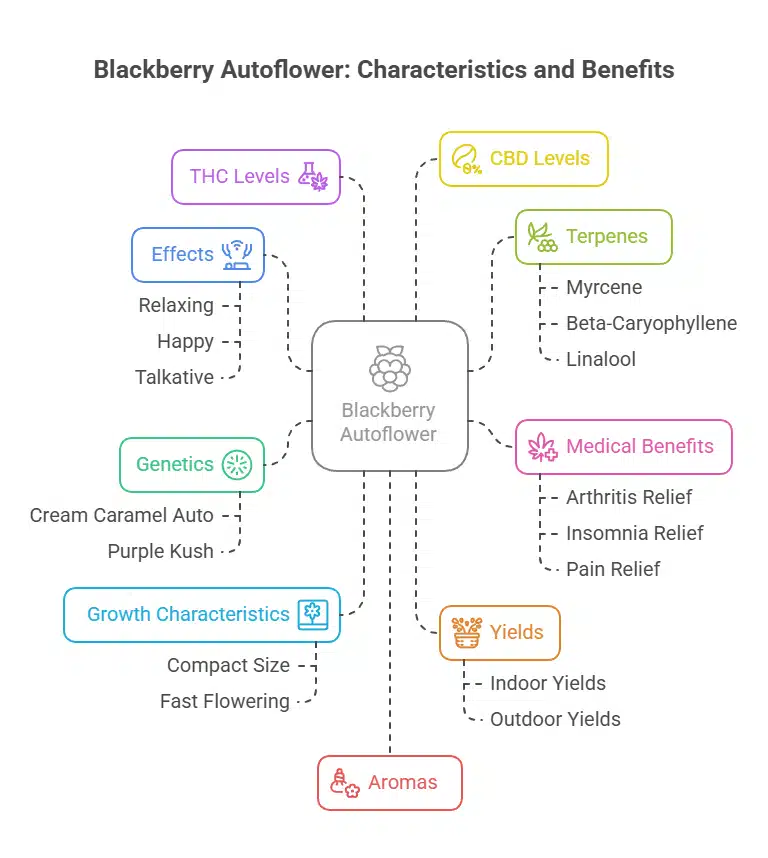
FAQs
How long does Blackberry Autoflower take to finish?
It completes its full cycle in 8–10 weeks from seed to harvest. Its autoflower genetics ensure a predictable timeline, even without light-triggered flowering.
Can I grow it outdoors year-round?
Yes its compact size and autoflower trait allow multiple plantings per season. Plant after the last frost in a sunny spot with well-draining soil.
What yields can I expect?
Indoor yields average 1.47 oz/ft² (450 g/m²); outdoors, expect 2–4 oz (80–120 g) per plant under optimal conditions.


